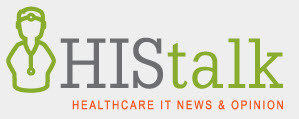04-29-2020, 06:22 AM
Why E-Notifications Matter More than Ever
Amidst the COVID-19 crisis, sharing real-time information about patients’ care encounters across providers and settings matters more than ever. In particular, hospitals sharing admission, discharge, and transfer (ADT) events with COVID-19 patients’ community-based providers is critical to ensure better, safer, and faster treatment and care transitions for infected and recovering patients.
ADT events, when shared as notifications, enable these improved care transitions because they include relevant information about a patient’s current care encounter, basic demographic details, diagnoses where permissible and available, and information about the provider or institution sending the notification. Even before the current pandemic, the Centers for Medicare and Medicaid Services (CMS) recognized the importance of such ADT notifications in supporting patient care and finalized a new Condition of Participation (CoP) as part of the Interoperability and Patient Access Rule (CMS-9115-F). The CoP requires hospitals to share electronic ADT event notifications, or e-notifications, with other community providers, such as primary care physicians (PCPs) and post-acute care providers, to facilitate better care coordination and improve patient outcomes.
The necessity and benefit of these e-notifications has come into stark relief as providers and the healthcare system more broadly fight COVID-19. ADT-based e-notifications are an accessible and easy way to help enable better safety for COVID-19 patients and their providers while also ensuring efficient use and appropriate allocation of scarce resources. We are outlining five such use cases below.
1. Safety for Patients
Protecting patient safety and providing appropriate treatment is especially urgent during a crisis like COVID-19 when resources are limited and staff are stretched. E-notifications allow hospitals that treat COVID-19 patients to more rapidly get in touch with a patient’s other providers and obtain important medical histories to help guide treatment and clinical decision-making. Traditional exchange of data facilitated by phone calls, faxes, or labor intensive data searches can introduce treatment delays, unnecessary or harmful interventions, and frustrations for providers. The faster information can be exchanged and a patient’s history is known by the hospital care team, the easier it is to effectively and safely treat the patient with the most appropriate interventions.
2. Safety for Providers
Hospital e-notifications are especially important for post-acute and other community-based providers that will continue treatment for COVID-19 patients discharged from the hospital because they provide context about the patient’s most recent encounter, including diagnoses where available and permissible, to help guide the continuation of care. The ability to share and receive information from hospital ADTs allows those providers to appropriately prepare staff and put safety measures in place prior to receiving COVID-19 patients. In particular, Skilled Nursing Facilities need time to properly and safely intake infected patients while Home Health Agencies need to prepare and equip their nurses for visits to homes of infected patients.
3. Open Hospital Beds for the Sickest Patients
Through real-time e-notifications, hospitals are able to more easily and quickly communicate and share information with COVID-19 patients’ other community-based providers who will care for recovering patients after they are discharged from the hospital. This exchange of information allows hospital care teams to more seamlessly and quickly transition recovering COVID-19 patients to the next level of care, which opens scarce hospital beds for the sickest patients.
4. Better Care for COVID-19 Patients
Real time e-notifications from hospitals allow PCPs and care coordinators to know when their patients have inpatient or ED events. In particular, discharge notifications can trigger critical follow-up services, including telehealth, to ensure COVID-19 patients recover safely and fully after they leave the hospital. Engaging COVID-19 patients after a hospitalization can help prevent readmissions and keep healthy in their home. At the same time, PCPs are able to support the financial viability of their practices by being able to provide and bill for Transitional Care Management Services and ensure patient engagement in ongoing preventive and other clinical care.
5. Improved Public Health Response
ADT-based notifications offer wide-ranging and powerful real-time data for local, state, and federal public health officials to detect emerging COVID-19 hotspots and intense ED, hospital, ICU strain. With de-identified data to ensure patients’ health information is protected in accordance with HIPAA, notifications about hospital and ED utilization can help public health officials direct and allocate scarce resources to the highest need areas quickly.
These are just some examples of how patient care can be better managed when providers and care teams are connected during clinical encounters for the benefit of patients. We are seeing care teams come together daily in transformative ways by leveraging ADT e-notifications, especially during these trying times.
To learn more about PatientPing’s COVID-19 efforts, click here. For more information on CMS’s new e-notification requirements, visit www.adtnotifications.com.


